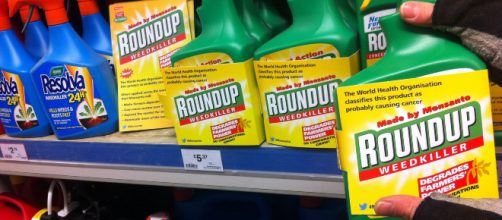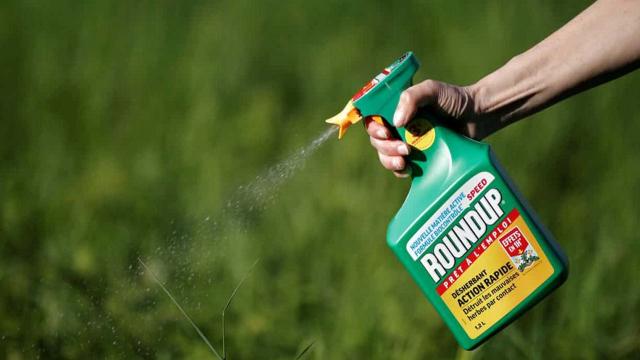The first Irish study of adult exposure to glyphosate, the most commonly found pesticide in Ireland, has ruled that the general population is subject to “low exposure” from the chemical, a range well within acceptable EU safety limits. Headed by NUI Galway (NUIG) researchers, background levels of the active ingredient in more than 750 products were assessed, including the global favourite, Roundup. The team’s findings affirm the common sense of the international scientific community – that the herbicide poses no threat to public health. But this publicity alone is sure to add fuel to the flames of anti-glyphosate activists regardless.
Fuelling the flames
Although glyphosate exposure levels are time and time again shown to be within the EU’s safety limits, the issue of exposure has long been a rallying cry for activists in Europe and elsewhere. In October last year, a study tracking the urine samples of southern Californians found an increase in the number of people with traces of the herbicide in their urine from 1993 to 2016. The findings were a red rag to hardline environmentalists, despite the research team themselves admitting to having no real evidence of any negative health implications related to such traces.
Even so, it appears hard evidence is far from a minimum requirement to get European Parliament members into toilet stalls.
The aptly named “#MEPee” test in 2016, spearheaded by the Green Party, saw a number of parliamentarians proudly posing with vials of their own urine on social media in a bid to draw attention to the presence of glyphosate and the supposed need for a blanket ban on its use on European farms. Then in May this year, the European Food Safety Authority (EFSA) reviewed the safety of glyphosate residue levels and once again ruled exposure levels as safe, and well below maximum residue levels (MRLs).
Questionable motives
Sadly, the damage seems to have already been done. On the same day EFSA published its residue assessment – 17 May – several MEPs launched yet another investigation into the health effects of glyphosate, in addition to an inquiry into the EU’s overall pesticides authorisation system.
Conducted by scientists from Italy’s Ramazzini Institute, the study has been billed as “the most comprehensive study ever on glyphosate and glyphosate-based herbicides.”
Claims of that kind and their corollaries should be taken with a grain of salt because the Ramazzini Institute itself has a history of declaring various substances of daily use to be carcinogenic. Its focus in recent years has been on sweeteners – and glyphosate. However, its findings have frequently been scientifically debunked by major international authorities. In the case of sucralose sweeteners, for instance, EFSA wrote a scathing counter-study concluding that “the available data did not support the conclusions of the authors.”
In that light, the enquiry is, therefore, nothing more than paper pushing from EU policymakers keen to please.
After all, glyphosate was only just relicensed for another five years by the bloc in November last year, and farmers and local authorities are adamant that equally cost-effective alternatives are not readily available. In the UK, Norwich and Bristol city councils were made a laughing stock after using vinegar to control weeds in public parks as they tried to switch to alternative herbicides. The reality, as it turned out, was that using vinegar was found to be more expensive than glyphosate-based weed killers and much less effective.
Evidence of widespread manipulation
Worse still, the ongoing glyphosate debate is an unnecessary one, sparked only after the International Agency for Research on Cancer (IARC), an arm of the World Health Organisation, determined the herbicide as being linked to cancer in 2015.
EFSA and the rest of Europe’s agricultural sector were quick to respond at the time, and they have been fighting the IARC’s baseless claims for years since. Amid the mudslinging, new issues emerged that have deeply tarnished IARC’s reputation, centring around the fact that the organisation has failed on every count of scientific integrity: transparency, reproducibility, and overall “excellence” is nowhere to be found in the agency’s controversial ruling.
Instead, it has been revealed that IARC’s glyphosate study was subject to widespread manipulation, with the removal of a number of scientists’ conclusions that their studies found no link between the chemical and cancer in laboratory animals.
In another incident, an entirely new statistical analysis was inserted, reversing the original findings. At the same time, new data available at the time of the IARC’s ruling was outright ignored by the panel, citing “space constraints.” Unsurprisingly, both ECHA and EFSA, as well as the Environmental Protection Agency (EPA) in the US, have reached different conclusions. IARC is thus the only major institution that is criticising glyphosate to this day.
Still, with the new IARC leadership incoming, the institute is unlikely to start accepting the broad scientific consensus – for the new IARC director, Dr Elisabete Weiderpass has been deeply involved in the ongoing glyphosate dispute and has had an axe to grind with EFSA in particular.
In 2016, she co-authored an article, along with long-time glyphosate critic Christophe Portier and others, that sought to discredit EFSA’s evaluation system of the chemical.
EFSA is looking at tough times, especially now that the media exposure of the latest Irish study will likely only feed misconceptions of any real controversy and confirm the preconceived conclusions of those who are ignorant to scientific consensus. In that regard, the decision of European Parliamentarians to put glyphosate under the microscope once more is a step in the wrong direction. The never-ending battle over glyphosate is set to continue.




